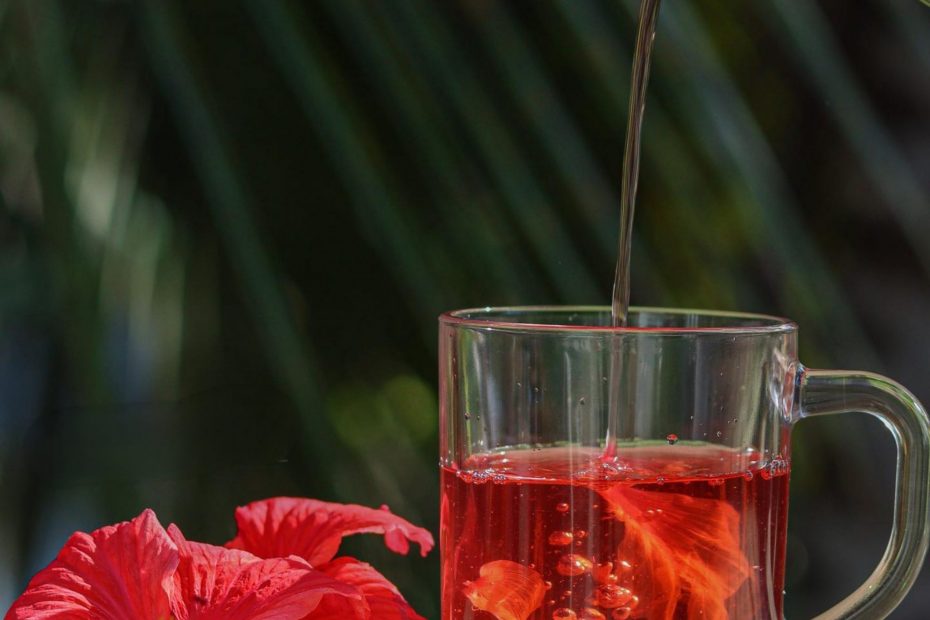Journey Into The World of Hibiscus Flowers
Hibiscus (Hibiscus sabdariffa L.), known as Karkadè or Abyssinian Pink Tea, is a shrubby plant belonging to the Malvaceae family whose flowers are especially well known. Hibiscus is native to the West Indies, but is also widespread in Asia (India, Sri Lanka) and Africa (Ethiopia, Sudan).
The part of the plant with the highest content of characterizing substances is the calyx of hibiscus flowers, which becomes fleshy and purple-red during flowering. The calyx contains the hibiscic, ascorbic, malic, citric and tartaric acids that impart the sour taste and the anthocyanins to which the red coloring is due.
Known to many is hibiscus tea, a thirst-quenching and refreshing drink. The flowers can also be used in combination with other plants to give herbal teas their characteristic tart flavor and red color. Hibiscus is rich in properties and benefits, and recent studies have also shown promising results in reducing hypertension and cholesterol levels.
Hibiscus flower properties and benefits
Hibiscus Tea is mostly consumed during the summer months as it is believed to be a refreshing and thirst quenching drink. Hibiscus flowers are also attributed with antioxidant, anti-inflammatory, antipyretic, analgesic, and antibacterial properties, but available studies on hibiscus mainly concern its action on hypertension and hyperlipidemia. In particular, carcadè seems to be effective in the treatment of mild and moderate hypertension as it would be able to reduce systolic blood pressure (SBP) and diastolic blood pressure (DBP).
Regarding its action on lipid profile, hibiscus consumption appears to be able to reduce LDL lipoprotein oxidation as well as reduce LDL cholesterol and triglyceride levels while HDL cholesterol generally appears to be unaffected. The results of the effects on blood pressure and lipid profile are promising for the possible use of hibiscus in the prevention of cardiovascular disease, but research to date points to the need for further study and investigation. It also appears that hibiscus has no significant side effects, proving to be a very well-tolerated remedy even though it appears to have interaction with some drugs (such as paracetamol)
[Sources: Hopkins AL, Lamm MG, Funk JL, Ritenbaugh C. Hibiscus sabdariffa L. In the treatment of hypertension and hyperlipidemia: A comprehensive review of animal and human studies. Phytotherapy 2013, Mar;85:84-9]
Hibiscus is also traditionally used for colds, catarrh, circulatory disorders, lack of appetite, and as a mild laxative and diuretic. This along with other products constitutes one of the best infusions for colds and respiratory congestion.
The parts of the plant used in herbal medicine are the flowers, but leaves, seeds and roots are also used in certain herbal preparations. For example, the essential oil, obtained from Hibiscus seeds, has cholesterol-lowering properties (mentioned above) as it is rich in essential fatty acids and vitamin E.
The leaves, then, can be consumed in salads for their refreshing, emollient, sedative and diuretic properties.
The flowers have a diuretic action and are found to be useful as anti-wrinkles. They are, often, used in the culinary sphere for the preparation of sauces, jellies, jams and wines.
Hibiscus roots, on the other hand, due to their bitter taste, are used in the liquor industry in the production of bitters.
Karkadè or Hibiscus tea
Added to all this is the excellent flavor of the drink obtained from hibiscus flowers, its high content of vitamin C, antioxidants in the form of polyphenols and flavonoids-in short, a perfect ally for summer.
In this season you can, therefore, prepare a cold Hibiscus drink or tea, excellent refreshing and very easy to make, which many of us know as Hibiscus Tea.
How to prepare hibiscus tea
For 1 liter of drink
- 15 grams of dried hibiscus flowers
- 1 liter of water
- Ice
- Syrup for sweetening (to taste) – for this you will need 250 ml of water and 200 grams of sugar
- You will be able to add, e.g., cinnamon, mint, lime.
Remember: hibiscus is theine-free! If you wish to include it in your preparation you will need to add a tea to your taste.
Procedure
Put hibiscus and water in a pitcher. Once you have the right ingredients, making fresh hibiscus infusion is easy, it just takes a little time. Start by putting the flowers in a pitcher and pour in the water. Stir lightly.
If you use cinnamon, lime, mint, or desire theine add the elements now.
Leave in the refrigerator overnight. You will need to let the tea steep for at least 8 to 12 hours. Cover with foil to protect the brew.
Strain and serve over ice. When the tea has reached the right color and is well flavored, remove it from the refrigerator. Fill glasses with ice and pour the brew through a strainer to remove the flowers and other ingredients you have added.
Your drink is ready!
